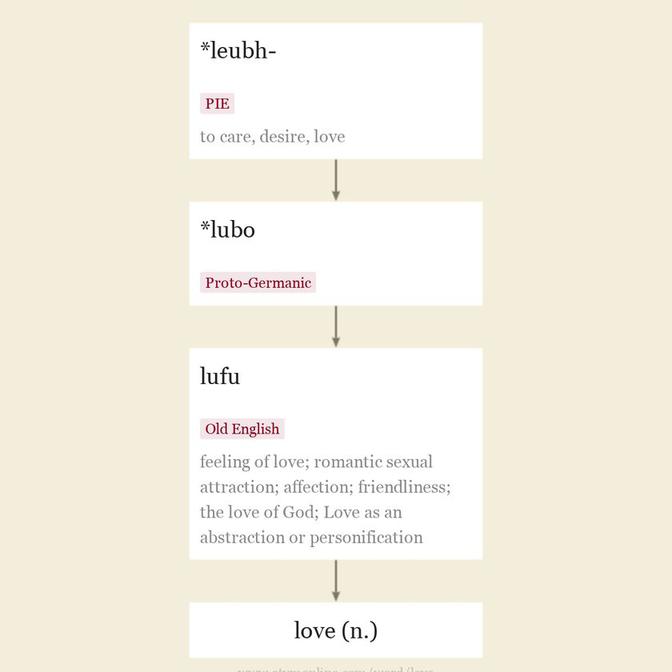love-knot n.
bow or ribbon tied in a particular way, as a love token, late 14c., from love (n.) + knot (n.).
Entries linking to love-knot

Old English lufu "
The weakened sense "
To fall in love is attested from early 15c.; to be in love with (someone) is from c. 1500. To make love is from 1570s in the sense "
"Even now," she thought, "almost no one remembers Esteban and Pepita but myself. Camilla alone remembers her Uncle Pio and her son; this woman, her mother. But soon we shall die and all memory of those five will have left the earth, and we ourselves shall be loved for a while and forgotten. But the love will have been enough; all those impulses of love return the love that made them. Even memory is not necessary for love. There is a land of the living and a land of the dead and the bridge is love, the only survival, the only meaning." [Thornton Wilder, "Bridge of San Luis Rey," 1927]
Old English cnotta "
Figurative sense of "
The nautical unit of measure of speed (1630s) is from the practice of attaching knotted string to the log line at equal distances (see log (n.2)). The ship's speed can be measured by the number of knots that play out while the sand glass is running.
The distance between the knots on the log-line should contain 1/120 of a mile, supposing the glass to run exactly half a minute. [Jorge Juan and Antonio de Ulloa, "A Voyage to South America" 1760]
Hence the word knot came also to be used as the equivalent of a nautical mile (in pre-World War II use in U.S. and Britain, about 6,080 feet). A speed of 10 knots will cover ten nautical miles in an hour (equivalent to a land speed of about 11.5 mph).
updated on October 10, 2017